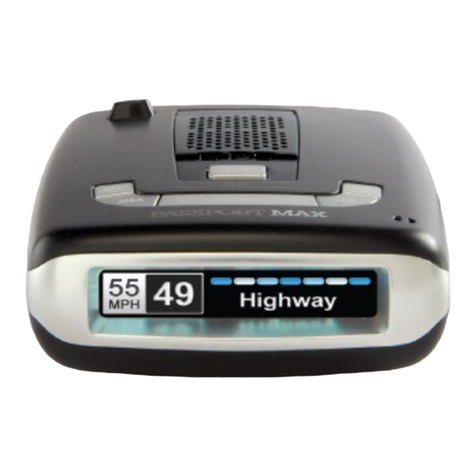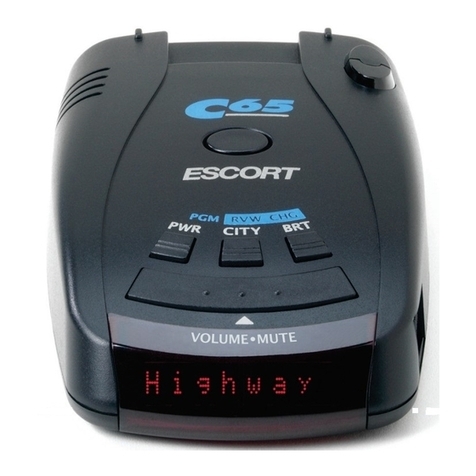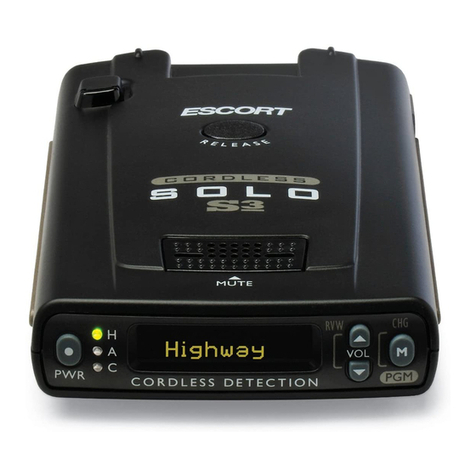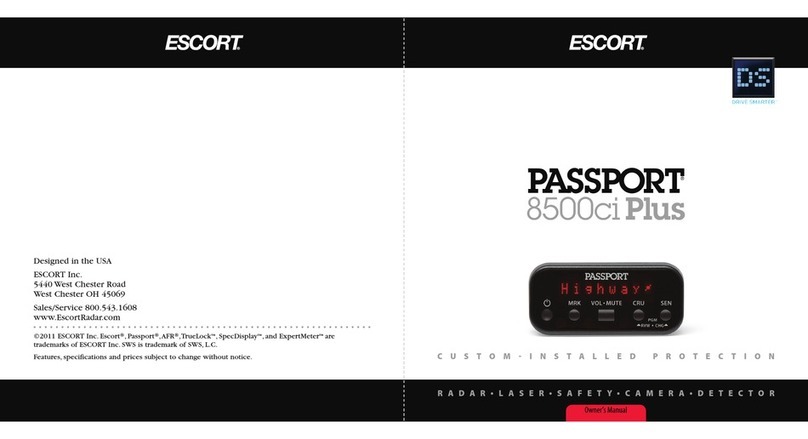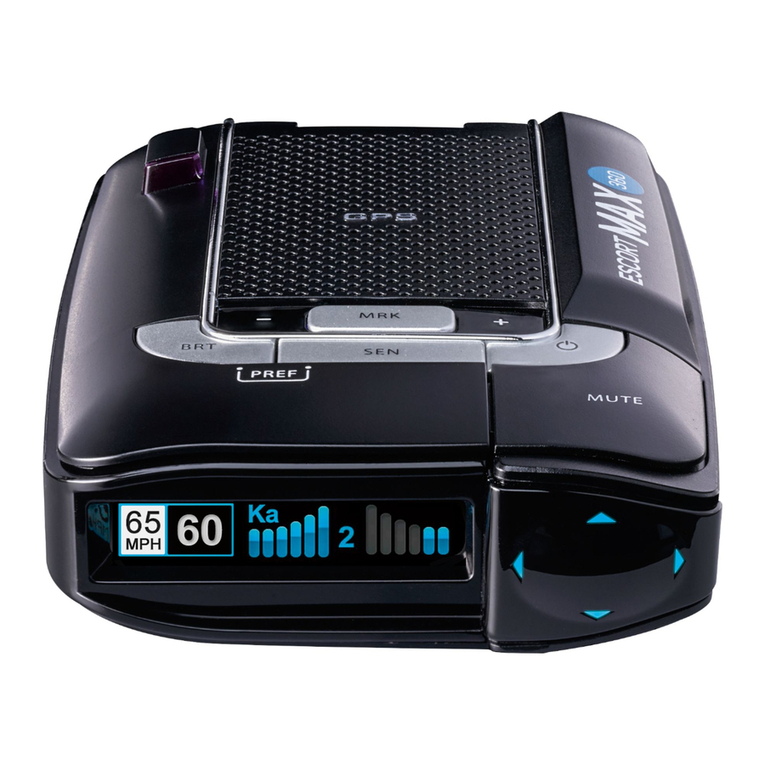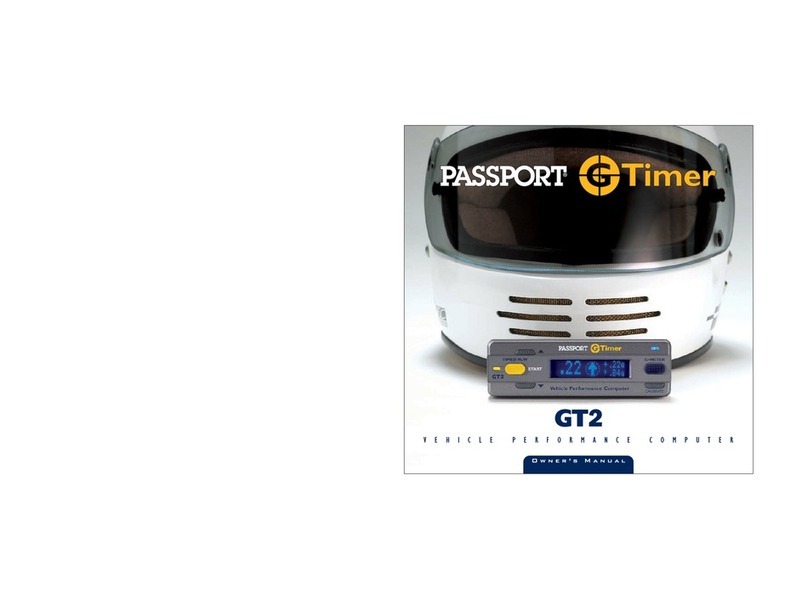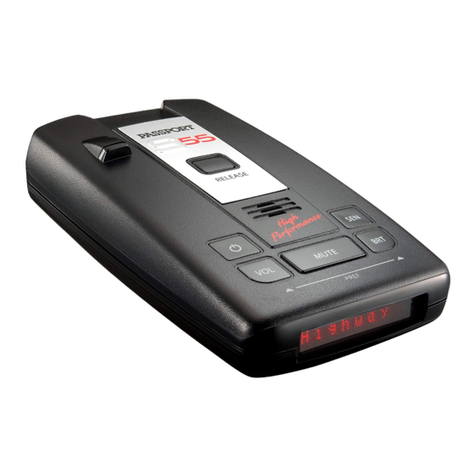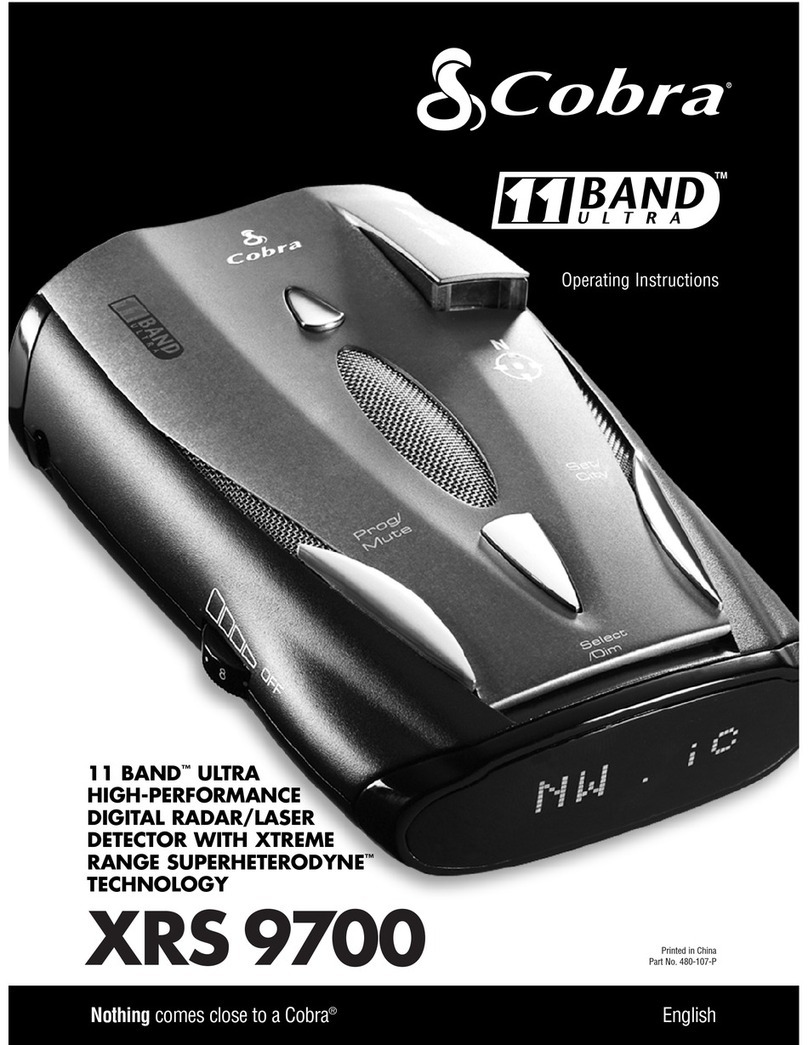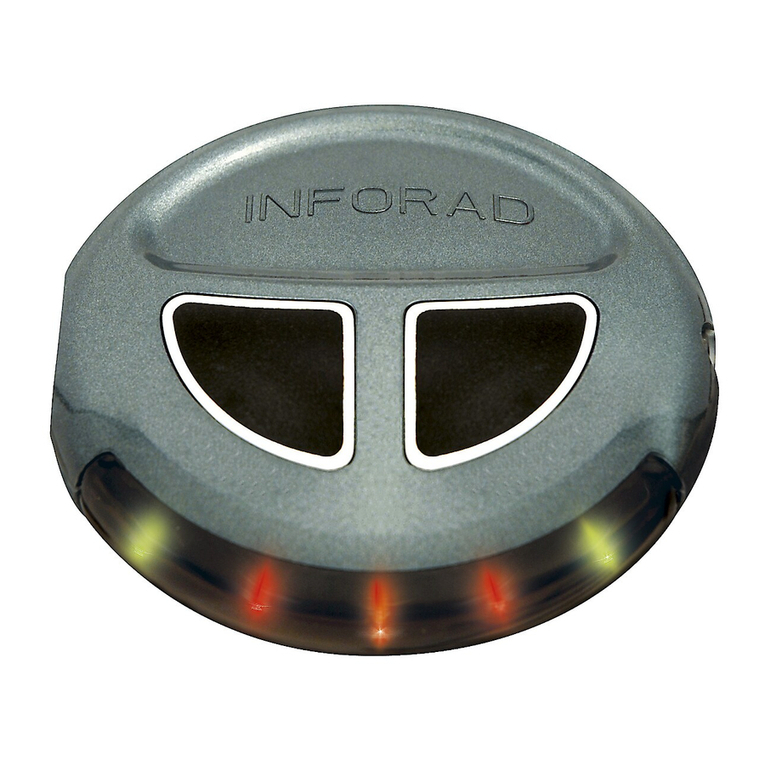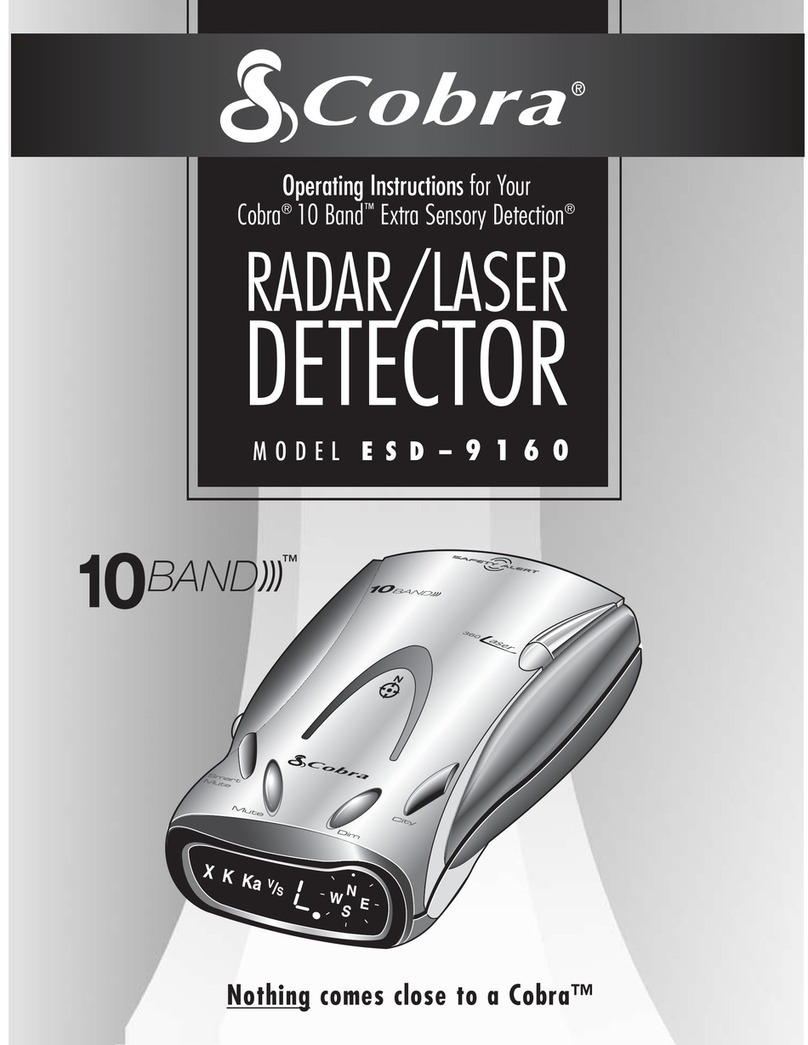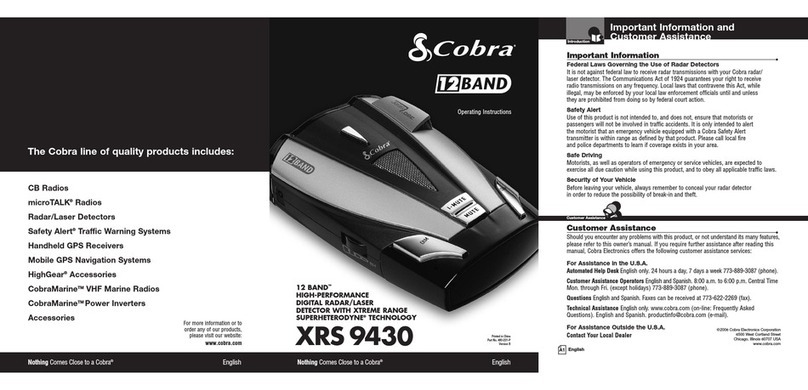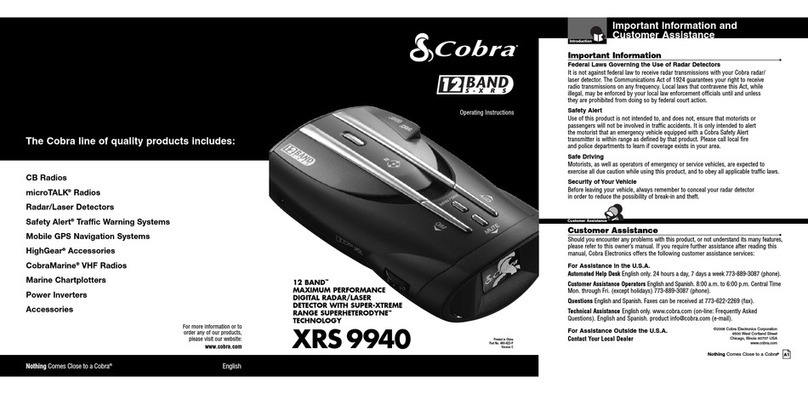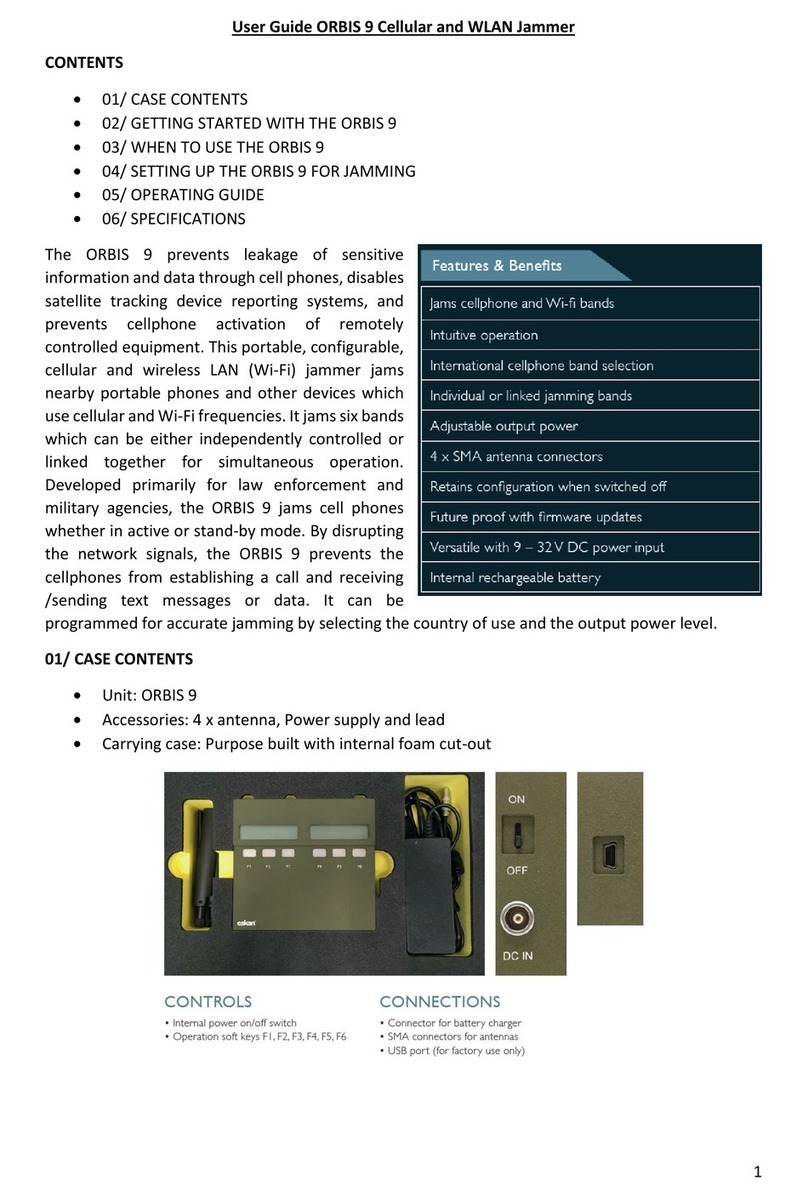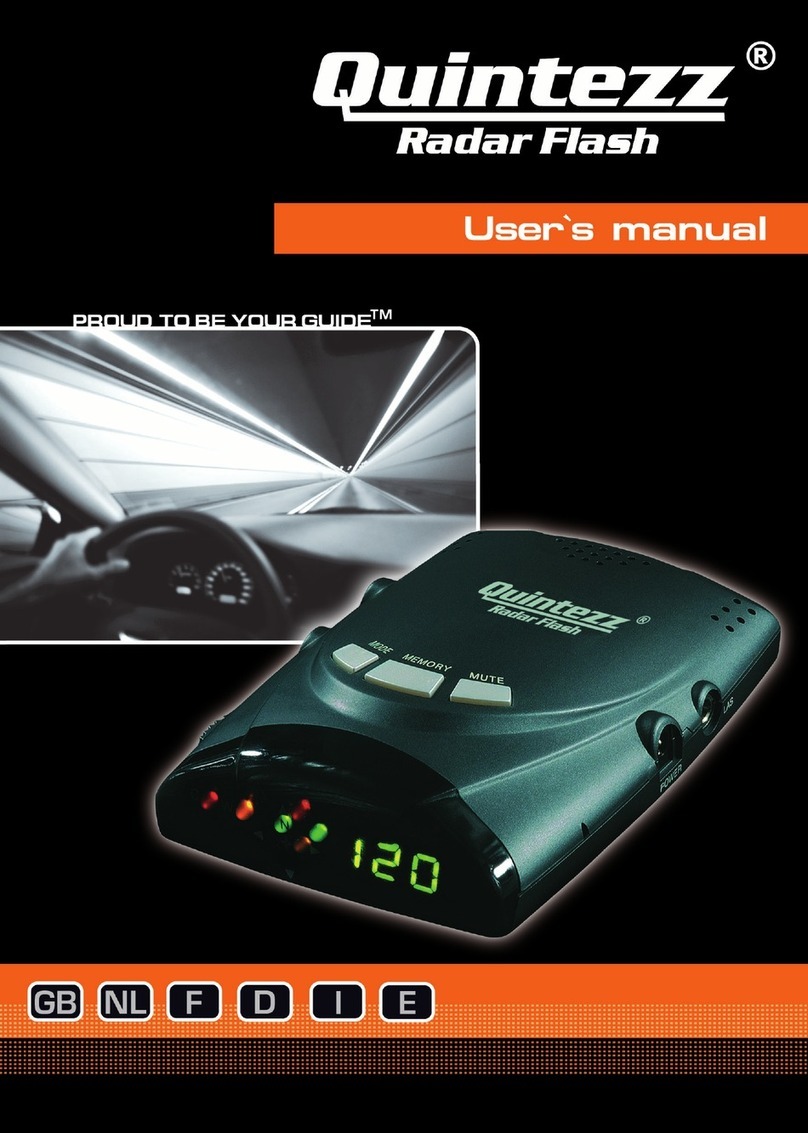
For more information or to order your ESCORT radar
and laser detector, call us toll-free at 1-888-8 ESCORT
How to select a radar and laser detector
Radar and laser detector users and legality
When choosing a radar detector,
you should focus on . . .
• High Sensitivity: A good detector
is very “sensitive.” is means the unit is
able to pick up weak and distant signals.
• Excellent Selectivity: A good
detector is also very “selective.” is
means that the unit has the ability to pick
out the right signals and reject the rest.
• Superior Alert System: A good
detector has warning systems that are
easy to use and easy to understand.
• Full Coverage of Radar and Laser:
A good detector covers laser plus all three
radar bands (X, K, and Ka), detecting
conventional as well as “instant-on” and
“POP” signals.
• Quality and ease of use: A good
detector has high-quality construction
with a clearly visible display, intuitive
controls, and durable mounts and cords.
Beware of false and misleading
claims and advertising
Inexpensive detectors use design
shortcuts to meet lower price points,
but at a high cost to the user. Inferior
performance and frequent false alarms
make these radar detectors ineffective
and distracting.
Some makers of low-end detectors make
deceptive and misleading claims about
features and performance. You’ll see:
• Misleading claims of 9-band, 10-
band, or 11 band coverage. Only three
FCC-approved radar bands are in use.
• Offers of reimbursing speeding
fines. If you read the fine print, you’ll
see the exclusions and limitations that
make these virtually useless.
How to choose the right
radar detector
Before purchasing any radar detector,
do your homework. Independent tests
compare radar detectors, including auto
enthusiast magazines such as Motor
Trend and AutoWeek, and websites such
as RadarTest.com and SpeedZones.com
Escort radar and laser detectors stand
out in performance, reliability, accuracy,
design, and value.
“The Passport 8500 might be the
best radar detector ever made.”
Forbes.com
“One unit emerged as the staff’s
favorite: Escort’s Solo S2.”
AutoWeek Magazine
“The Passport SRX is the most
advanced remote radar detector
available, offering unequalled
features and performance.”
SpeedZones.com
Get the facts
Who uses radar detectors?
Radar detectors are used by millions
of motorists. Far from being dangerous
drivers, a national research study found
that detector users were safer than other
drivers, driving on average an additional
five years between accidents.
And although you may associate the
use of a radar detector with highway
driving, in fact most tickets are given
on secondary roads, and most veteran
detector users never drive without one.
Different drivers, same protection
No matter what kind of driver you are,
no matter where you drive, there is a
premium detector that is right for you:
Are radar detectors legal?
Yes! Radar and laser detectors
are legal in non-commercial vehicles
in 49 states (all except Virginia and
Washington D.C.).
You have the right to use a radar
and laser detector. In fact, in a ruling
defending the right of motorists to
use radar detectors, a Superior Court
judge wrote, “If government seeks to
use clandestine and furtive methods to
monitor citizen actions, it can ill afford
to complain should the citizen insist on
a method to effect his right to know he is
under such surveillance.”
In other words, if the government is
going to monitor you with radar, you
have the right to use a radar detector to
know when they are monitoring you.
• e Car Enthusiast chooses the
ultra-performance Escort Passport
8500 X50 for his sedan, and the custom-
installed Passport SRX for his sports car.
• e Soccer Mom keeps her Escort
Passport Solo S2 in her SUV. It provides
peace of mind when she is transporting
the kids on secondary roads where
speed limits oen change frequently.
• e Commuter uses his Escort
Passport 8500 X50 every day, knowing
that speed traps can appear on back
roads as well as on the freeway.
• e Business Traveler carries his
cordless Escort Solo S2 in his briefcase, to
protect him from different speed limits
and enforcement used by different cities.
www.EscortRadar.com
©2005 Escort Inc. 40-000021-01, 11/05 Department TR901


